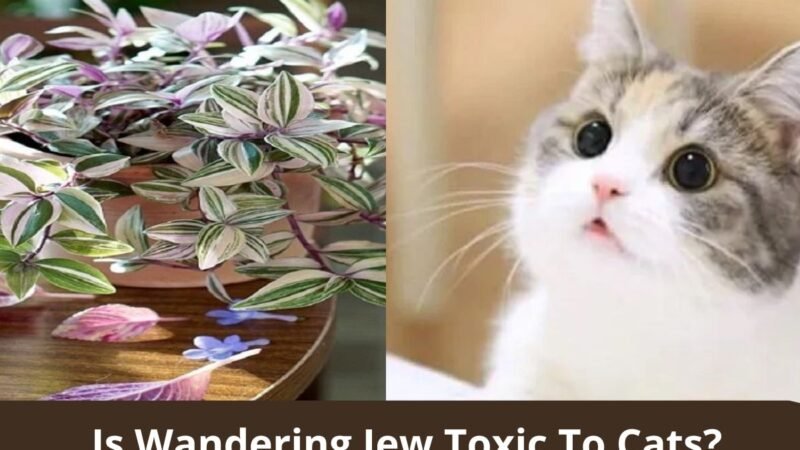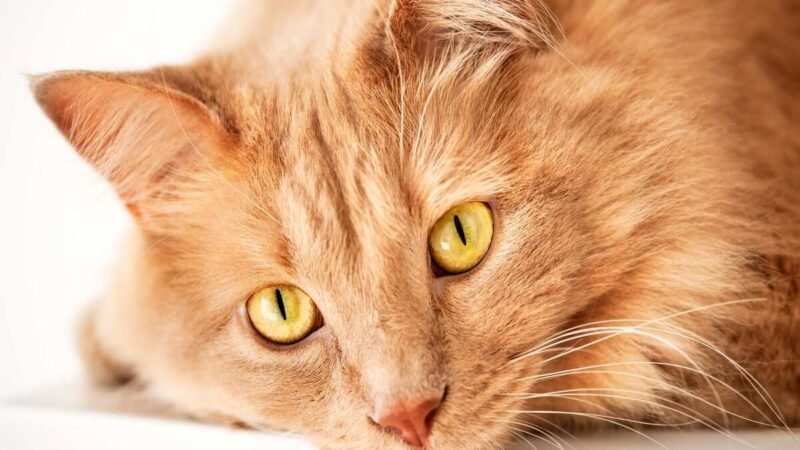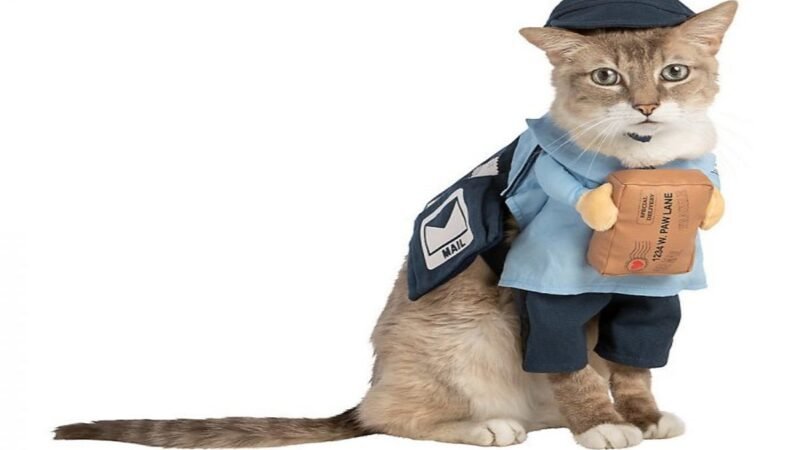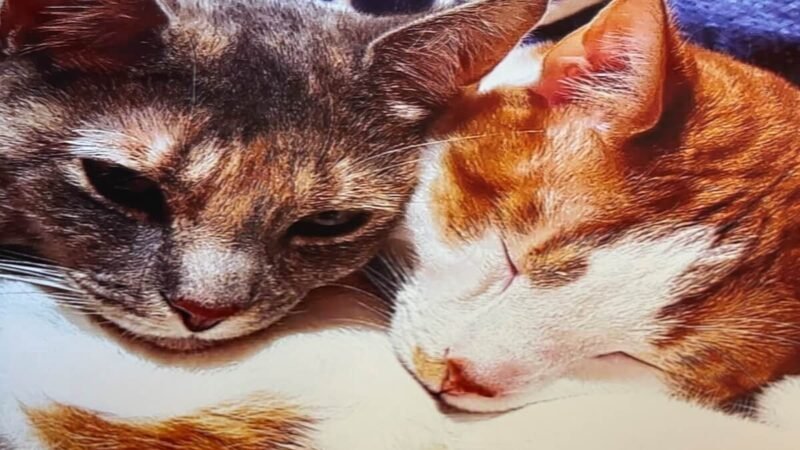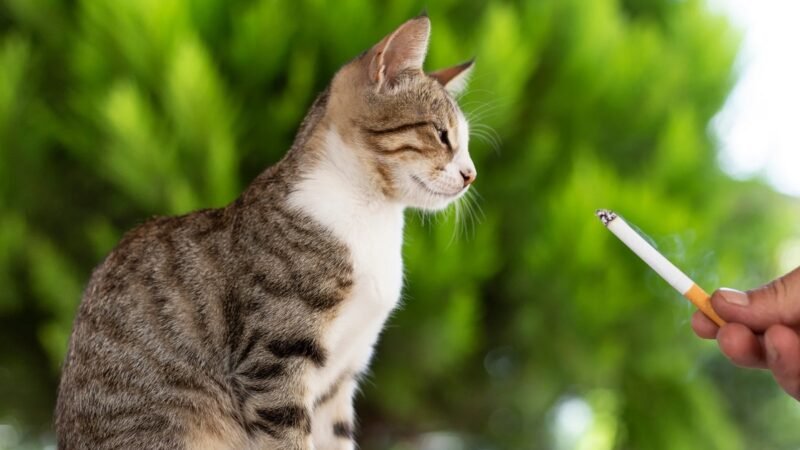Is Baby’s Breath Toxic to Cats?

Baby’s breath is a flower that is often used in bouquets. The small, white flowers bring out the colors of other flowers and make a good “background” flower for arrangements. Less often, you can find this flower in gardens or even as a weed. It grows quickly, so it can take over gardens and show up in places where it wasn’t necessarily wanted.
Most of the time, cats can be around the baby’s breath. But large amounts can cause small problems, like stomach upset. Smaller cats are more likely to have these problems, while bigger cats may have to eat a lot before they do. It is technically called “mildly toxic.”
But there isn’t much chance that it will cause serious problems. Most likely, it will just make your cat sick for a little while. Some cats, especially those with long-term illnesses, may be more likely to have problems because of this flower than others. Even so, the outlook is usually good.
Table of Contents
Is Baby’s Breath Toxic to Cats?
Native to Eurasia, baby’s breath was brought to North America to be used as a decoration, especially in the cut flower industry. The plant seeds itself easily, so it has spread across Canada and into the northern United States. Because it grows quickly and can survive harsh conditions, it is often called a weed. Some people might think a baby’s breath is a nasty weed but is it bad for cats? Yes, a baby’s breath is considered to be mildly toxic to cats.
What Happens If Your Cat Ingests Baby’s Breath?
So, what should you look for if you think your cat has eaten Baby’s breath? Most of the time, a cat’s symptoms of being poisoned by Gypsophila are not life-threatening, but they can make your cat feel bad. If you think your cat may have eaten Baby’s breath, you should take them to the vet right away so that the vet can help ease some of the painful symptoms your cat will feel.
Read More: How Doxycycline Ruined My Life
If your cat has eaten a part of Baby’s breath plant, you should expect to see some of these symptoms shortly after they have ingested parts of the plant:
- Vomiting
- Anorexia
- Having nothing to eat
- Lethargy
- Diarrhea
Can Cats Eat Baby’s Breath?
No, cats shouldn’t eat baby’s breath because it makes them sick. We don’t usually think about it, but some common plants in our gardens can be harmful to our pets. This sweet filler in many flower arrangements looks harmless, but it’s not so harmless for your cat’s stomach. When your cat eats a baby’s breath, it turns into a potentially dangerous substance.
If your cat eats Baby’s Breath plant, it might throw up and have diarrhea. Unfortunately, a baby’s breath is poisonous to both dogs and cats. Even though cats rarely die from eating baby’s breath, the flower can do a lot of damage if eaten.
It won’t hurt you or your cats long-term, though. Most of the things you’ve heard about the facility are not true. Even though the baby’s breath plant is not harmful, you should be careful around it. Experts at the ASPCA Animal Poison Center say that it is rare for a cat’s throat to get stuck, and most poisoned cats get better within 24 hours.
If you can, clean the cat’s mouth with water or milk. If you think the situation is serious, call a vet. Keep cats from getting to the baby’s breath. When you prune the plant, pick up any leaves that have fallen and throw away the clippings.
Read More: How to Change Name On Cod Mobile
Causes of Maiden’s Breath Poisoning in Cats
There is some confusion about what causes the maiden’s breath poisoning. For example, many people think that the chemical “gyposenin” is to blame because it is often found in plants that are related to a maiden’s breath. In fact, “saponin” is the real culprit.
Saponin is mostly made to keep the plant free of tiny parasites, but its detergent-like chemical structure also makes it repellent to larger animals. The toxin attacks the tissues it comes in contact with directly by sticking to its cell walls and breaking them. It causes irritation to the cat’s skin and mouth, as well as damage and pain to the digestive tract if it is swallowed.
Should You Go to the Vet?
When cat owners hear words like “toxic” and “poisoning,” they usually have to take their cats to the emergency vet. But this is not always true when it comes to a baby’s breath. Cats are usually sick for a few hours and then get better. Once the flower is out of their symptom, the GI symptoms stop, and the cat starts to act as it did before.
If your cat is healthy and stable, you may want to call your vet. But they won’t usually ask you to bring them in unless they are showing signs of being dehydrated. You may need to keep a closer eye on your cat, but you probably don’t need to take it to the vet in the middle of the night.
So, if your cat is young, old, or weak, you might want to keep a closer eye on it. In some cases, the vet may ask you to bring the cat in, especially if the cat has a health problem that makes it more likely to get dehydrated. Cats with diabetes may have it especially hard since many of them won’t be able to eat for a few hours. If you aren’t sure, always call your vet.
Read More: What Happens if Cats are Left in a Dark House
How To Keep Cats Away From Baby’s Breath?
- Spray Bottles
- A Layer of Stones
- Make the environment unpleasant
- Repellent Spray
- Change of Where
Conclusion
If you sell Baby’s Breath flowers or have the plant growing in your home or garden, keep it away from your cat so they don’t try to eat it. Since baby’s breath is a common garden plant, it’s best to get rid of it if you find your cat wandering around where it grows.
Frequently Asked Question (FAQs) about Is Baby’s Breath Toxic to Cats?
Why is my cat eating babys breath?
The part of the Baby’s breath that is most dangerous is the flower. This makes it risky for cat owners to grow this plant near their cats because the sweet smell of the flowers might make your cat want to eat them.
Are baby breath flowers poisonous?
You can also find these delicate clusters growing wild in a lot of the northern United States and Canada. They are often called invasive weeds. Even though these sweet, soft blooms look harmless, baby’s breath has a little secret: it’s a little bit poisonous.
Is baby’s breath poisonous to animals?
Baby’s Breath is a lacy white flower that is often used in bouquets for decoration. It has toxins in it that can make dogs throw up and have diarrhea if they eat it. Most of the time, a Baby’s Breath poisoning has mild symptoms. Make sure you and your pet are safe.
Are carnations and baby’s breath poisonous to cats?
Pets can also get sick if they eat tulips, baby’s breath, birds of paradise, hyacinths, stargazers, carnations, or daisies.
Is Lavender toxic to cats?
Lavender is only slightly dangerous to cats, which means it doesn’t usually kill them. “The pretty purple-flowered plant has two dangerous chemicals in it called linalool and linalyl acetate, which cats’ livers can’t break down,” Dr. Conrad told The Dodo.
Is baby’s breath toxic for dogs?
Gypsophila, also called “Baby’s Breath,” is mildly poisonous and can make a pet’s stomach upset if they eat it.
Is it safe to put baby’s breath on a cake?
Even though they are often used in bouquets, flowers like hydrangeas and baby’s breath are poisonous. Even if you don’t eat the flowers themselves, just touching the buttercream that you will eat could be harmful, so it’s best to stick with flowers that you can eat.
Is Rose poisonous to cats?
Their sweet smell might make cats want to try them. Most people quickly realize that the flower isn’t very tasty, but a few end up loving to eat roses. Dr. Maureen K. says that roses by themselves are not dangerous for cats.
What happens if a cat eats a carnation?
Cats get carnation poisoning when they eat the plant’s stem, leaves, or petals. This is a mild form of poisoning. Carnations aren’t too dangerous for cats, but they can cause stomach problems like vomiting and diarrhea.
Can cats be around hydrangeas?
Even though hydrangeas are beautiful and one of the most sought-after flowering bushes, there is one thing you should know about them. According to PetMD, cats and dogs can get sick if they eat hydrangeas, but they have to eat a lot of them before they get sick.
What scents are safe for cats?
Lavender, copaiba, helichrysum, and frankincense are just a few common essential oils that are SAFE to use on your cat. If you use an oil diffuser in your home, it shouldn’t bother your cat because the oil used in a diffuser is very diluted (versus direct topical application or dietary supplementation).

